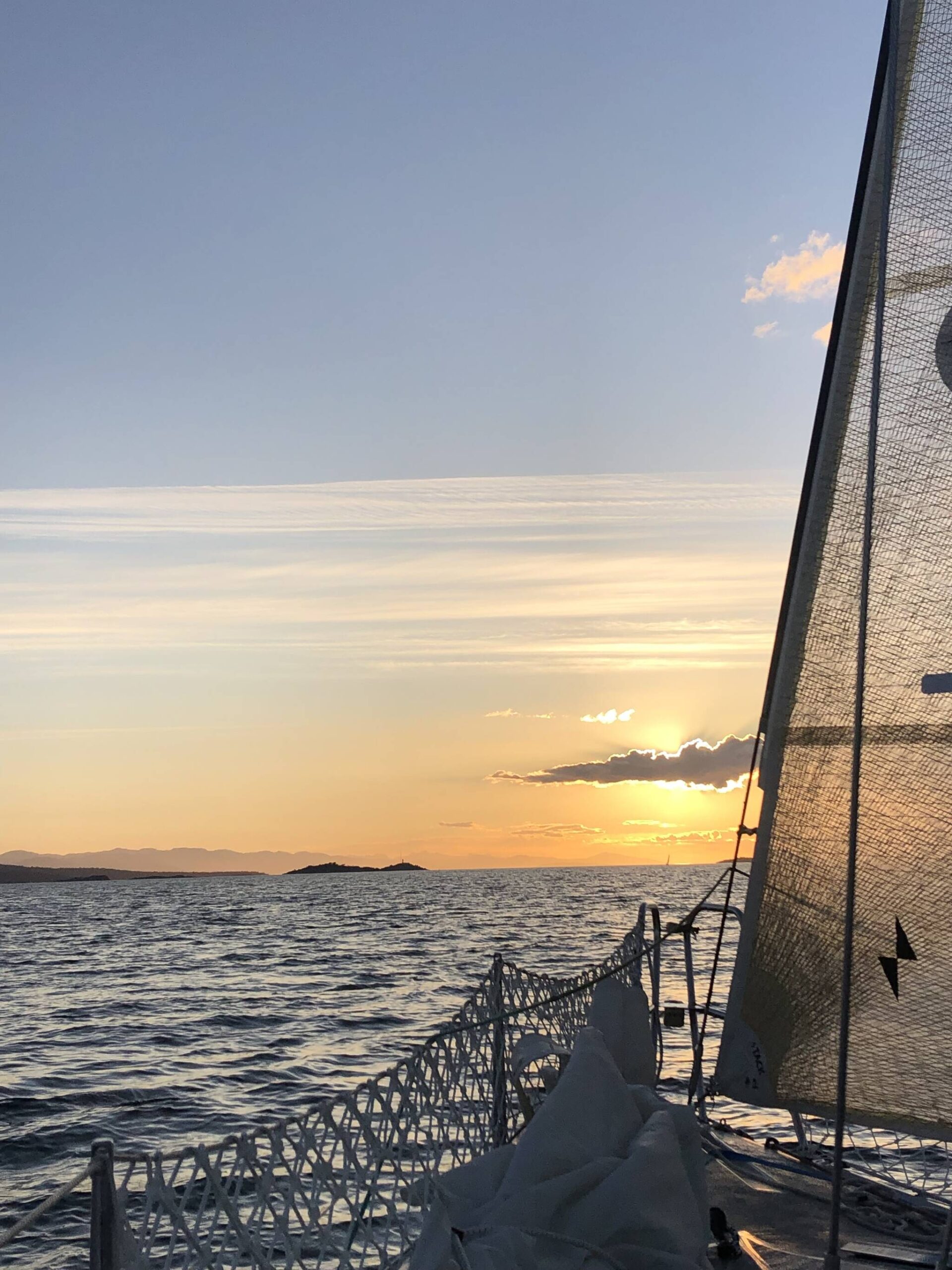After almost eight days of sailing, Orcas Island teens Dagney Kruger and Else Ranker finished the Race to Alaska on June 20. Joined by Bellingham teammates Bryce Lutz and Willow Gray, they traveled the 710 miles from Victoria B.C. to Ketchikan, Alaska on their Carrera 19, Loose Cannon. The team faced different challenges throughout their journey but also met many great supporters and participants along the way.
The team, which chose the name ‘The Juvenile Delinquents’ in reference to the final weeks of school they would skip in order to participate in the race, left for Alaska at noon on June 12. Prior to this official start, teams completed a portion known as ‘the proving grounds’ on June 9, which involved a 40-mile stint from Port Townsend to Victoria B.C. It was during this initial run that The Juvenile Delinquents faced their first challenge. The team discovered leakage as standing water began to pool. Lutz caulked the boat following this discovery, but the leaks continued to be a slight challenge for the team.
Around the third day of the trip, they hit the most difficult part of the journey as they crossed Queen Charlotte’s Strait between Vancouver Island and the mainland of British Columbia, Canada. The team, two of whom had been awake since midnight due to a disruption in their sleep schedule after making a stop to catch the tide, faced high winds and large swells coming off the ocean, the first swells they had experienced thus far.
“Suddenly we’re beating upwind and we can see on the tracker that we’re like, three to four miles [behind them], and these were two teams that we’ve been catching the whole time,” said Kruger. “So we know they’re like right there, but also everyone’s seasick, and all day we see these giant swells and heavy wind, it’s not fun.”
Additionally, Kruger explained that while in Queen Charlotte Strait, you can see Cape Caution, the next daunting landmark for competitors. It is the first cape on the course that is unprotected and out on the open ocean, where the racers experience the largest swells of the trip.
Once they forged through the rough open water, the team experienced smoother sailing, ducking behind islands for more protection and falling into more of a rhythm with their sleep schedules and acclimating to being on the water. They took turns with two awake and two asleep unless more extreme conditions required three on deck. Kruger said that all of the members needed to know how to do everything since there were only four people on the team and everyone needed to sleep.
Despite a windier start to their adventure during the proving grounds portion, the wind was lighter than Kruger had hoped for. Because their pedal drive was not in top condition, the team was at a disadvantage, but they still finished 4th among other monohull vessels and 8th overall.
One of Kruger’s original goals was to beat the other youth team from Seattle, Rock the Boat. The Juvenile Delinquents ended up finishing only two hours after them, according to the R2AK results.
“It turned into a lot more of a drag race than I ever thought it was going to be,” said Kruger. “You look at the tracker, it’s like we’re basically on top of each other for the last three days, just like drag racing. We didn’t beat them, but we only lost to them by like, an hour after [sailing] over 700 miles, it was crazy.”
However, there were no hard feelings. Kruger described one of the highlights as the night before the two youth teams finished the race. Rock the Boat pulled up behind The Juvenile Delinquents and the two rafted their boats together, tossing snacks back and forth between the boats.
Besides the camaraderie created by fellow competitors, Kruger mentioned the overwhelming support from friends and family, as well as spectators who kept track of the racers’ progress online. During their only stop on land to get more water, the team decided to stop near a tiny town after making it past Brown Bay and Seymour Narrows, the first major landmark in the race. Kruger said when they pulled up to the dock, there were already two people waiting for them with a hose and a jerry can filled with water.
As for the scenery of the trip, Kruger quoted her teammate Gray who was amazed by the surreal beauty: “It was a lot less rainy than expected and more of a fever dream.”
If given the chance to re-do the race, Kruger said in general she felt they did a good job and wouldn’t change much beyond running more tests prior to the journey to discover the leaks as well as improve the pedal drive situation. As for advice to those interested in competing in the R2AK, Kruger adamantly encourages others to go for it, but to be prepared for the highs and lows of the trip, and that it helps to have someone who has sailed up the coast before.
“You’re gonna hit a low moment, if you don’t move, then you’re gonna stay there. But like, I had such a hard moment in Johnstone strait like, ‘What the hell are we doing here?’ But as soon as you get up and you go outside, there is a beautiful moon and [the water’s] glassy, and there’s no end, it’s so pretty. You just have to appreciate where you are,” said Kruger.
In the future, Kruger hopes to compete in the Washington 360, a 360-mile boat race around the Puget Sound, which after completing the R2AK will be a ‘less serious’ venture for Kruger. She also hopes to compete in the Pacific Cup, a 2,000 mile yacht race from San Francisco to Oahu, Hawaii, with her father next summer.



